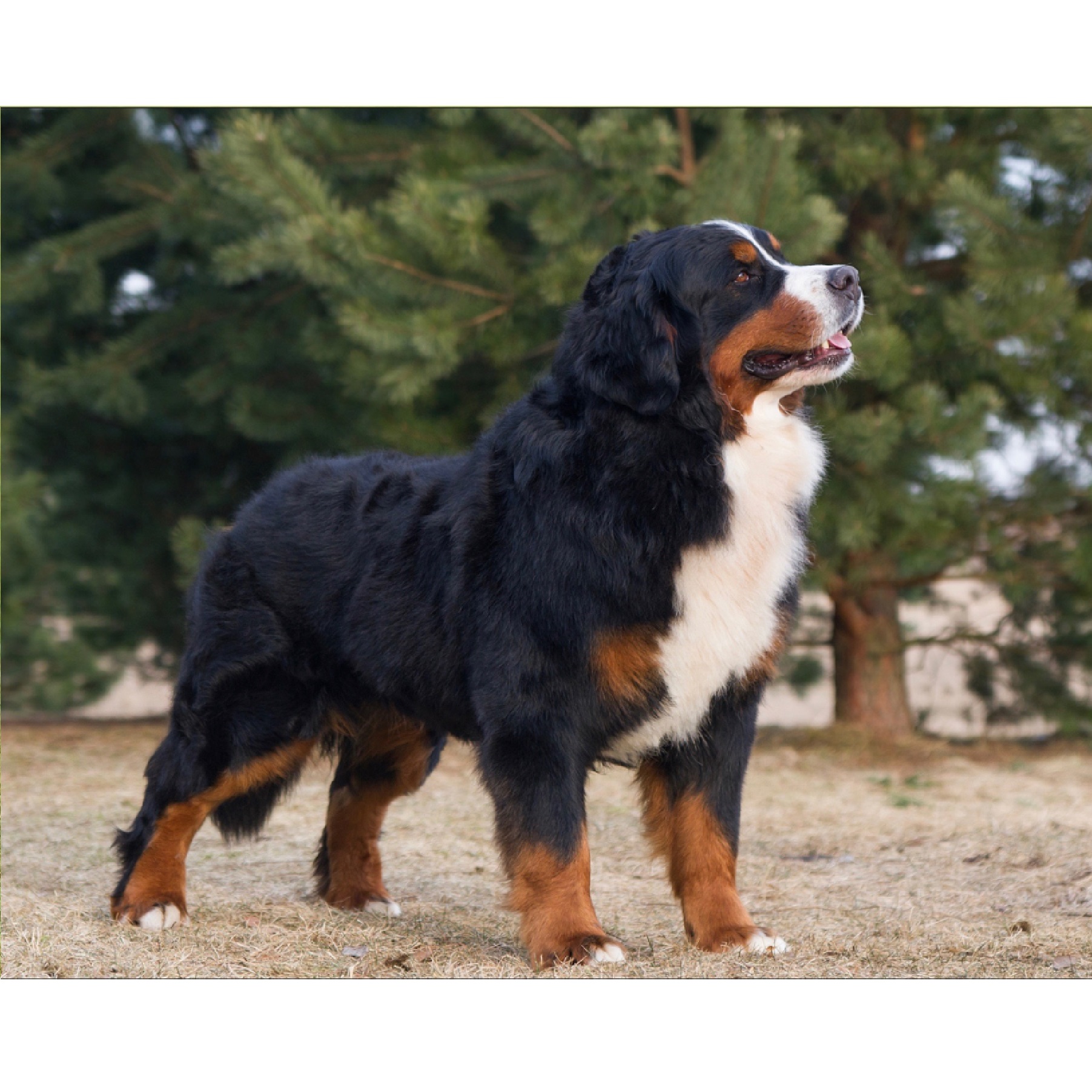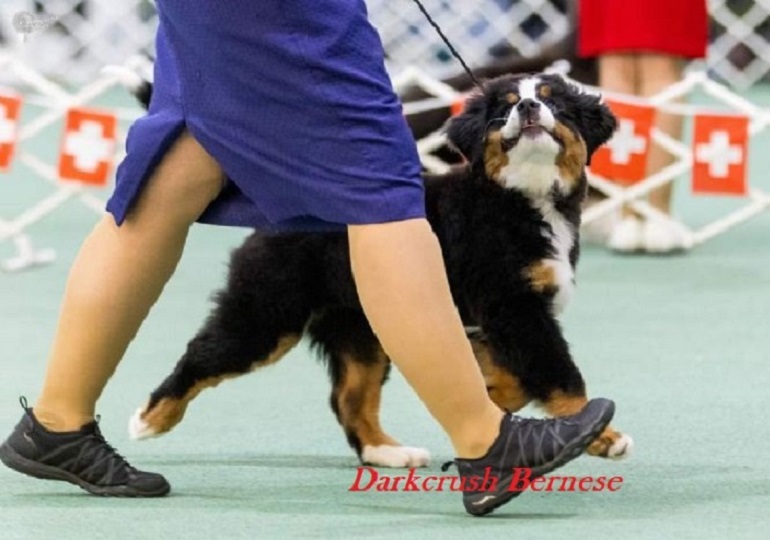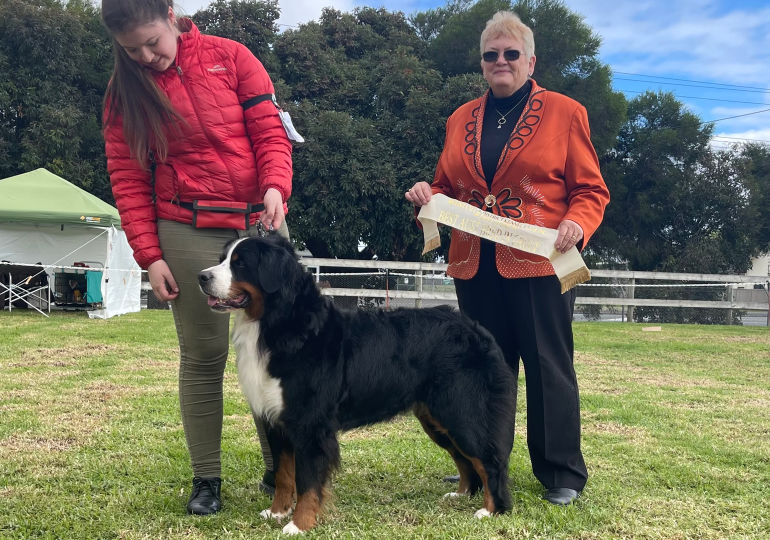Breeds
Bernese Mountain Dog

GROUP 6 - UTILITY
Brief History
The Bernese Mountain Dog is a working dog that had their origins in the farm areas of Switzerland. The Bernese we know today can be traced to the Durrbach region, south of Bern. The breed progressed steadily in Switzerland, where they have a history of farm work, guarding livestock, driving cattle and pulling carts. The carts were generally loaded with milk churns or cheese, or any type of small load which the dogs could carry with ease to the local factories or markets. They were also watch dogs for the farms and the farmers and this required a calm natured, self-confident dog, devoted to his home and his people.
Average Life Span
When considering a dog, please realise that you are taking it on for its lifetime.
The average life span is 6 to 8 years.
Temperament
Self-confident, attentive, vigilant, fearless in everyday situations; good-natured and devoted to his own people, self-assured and placid towards strangers, docile.
General Breed Description
The Berner is a longhaired, tricoloured, strong and agile working dog, of above medium size, with sturdily built limbs; harmonious and well balanced. Bernese Mountain Dogs excel as loyal companions, family pets, therapy dogs, watch dogs, and are seen frequently in conformation dog show and obedience rings. They are tri coloured, black the main colour with tan and white markings.
Coat and Care Requirements
They have a double coat, medium length, shining, straight or slightly wavy and they require a brush and comb once a week, or daily when they are shedding. A full groom, bath and blow dry is recommended approximately every 8 weeks, or as required. Be prepared for dog hair in your house and on your furniture!
Size
Height: Males 64 to 70cms, Females 58 to 66cms.
Health
All breeds have individual health issues. When speaking to breeders it is recommended you enquire about the breed’s health and what health testing the breeder does. The Bernese Mountain Dog is generally a healthy breed, however health conditions do occur occasionally. These may include Hip Dysplasia (HD), Elbow Dysplasia, Gastric Torsion (Bloat), Degenerative Myelopathy (DM), and Entropion & Ectropion. They are also susceptible to aggressive cancers such as Hystiocytic Sarcoma, which can decrease their life span.
Suitability
The ideal owner should be prepared for a dog that may not give them much alone time and will want to be involved in their daily lives. Short, regular obedience sessions should be part of their routine. Exercise should be minimal and slowly increased with age and maturity.
In Conclusion
Now you know a little more about this breed. If you have decided this is the dog for you and wish to investigate further, please contact the Breed Club or Dogs Victoria. They will be able to give you information about available puppies and also suggest dog events where you can see the breed and speak to breeders. In this way you will gain a better perspective of the breed and its needs. With any breed of dog, it is important to research and determine suitability for your lifestyle before committing to a puppy which will be a part of your family for many years to come.
Whilst many breeds are recommended for families, it is imperative that when children are with dogs they are supervised at all times. Basic obedience training is a vital part of dog ownership.
Dogs Victoria is about the responsible ownership of all dogs and in particular the preservation of pure breeds.
Link to Dogs Australia Breed Standard: https://dogsaustralia.org.au/breed/detail/173
Breeders




